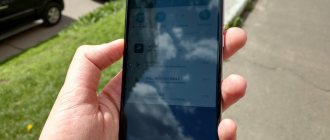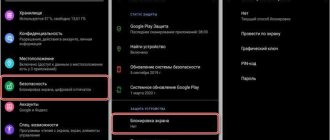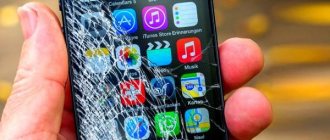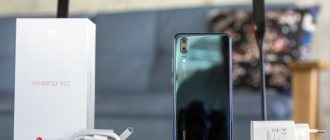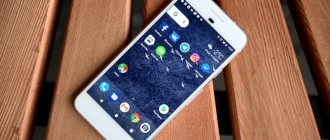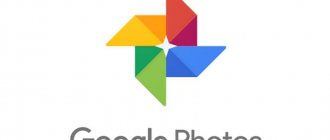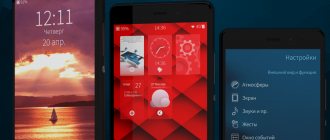Pixel 3: the next generation of mobile phones from Google
Like the old one, the new Pixel smartphone family consists of two models: Pixel 3 with a 5.5-inch display with an 18:9 aspect ratio and Pixel 3 XL with a 6.3-inch display with an 18.5:9 aspect ratio.
Both smartphones are protected by Gorilla Glas 5 and have an aluminum frame. At the same time, the reverse side is less slippery than the usual glass surfaces. These models from Google use "molecular etching" on the back cover, making it more grippy and less susceptible to untidy fingerprints. Both Pixel models are IP-68 certified, meaning they are protected from water and dust.
New Pixel family from Google: Pixel 3 and Pixel 3 XL
Pleasant and cute
In general, the Pixel 3a is surprisingly similar to the more expensive Pixel 3. It is a little larger in size, but otherwise the devices are like twin brothers. Therefore, comparisons between these two smartphones cannot be avoided. They are even tactilely similar, but the inexpensive 3a is made of polycarbonate. The plastic here has a very pleasant texture and does not feel like a cheap fake. And you know, plastic is not so bad. You can carry your smartphone without a case. Of course, it scratches more easily, but it practically does not break. In addition, the back cover here, in the manner of the Pixel 3, is made of two types of coating: a matte bottom part and a glossy top. Therefore, if you take two smartphones in your hands, it will be very difficult to distinguish which is the Pixel 3 and which is the 3a.
In terms of the arrangement of elements on the body, almost everything is the same. The power button is painted in a bright color (green for the Pixel 3 and orange for the 3a), the volume rocker is on the right edge, the tray for one SIM card is on the left (in the Pixel 3, on the bottom). The fingerprint scanner is located on the back cover; by the way, it doesn’t work very quickly. There are even pressure-sensitive touch faces here. If you squeeze the smartphone tightly in your hand, the voice assistant is activated. In the settings you can set the compression level.
Pixel 3 XL with OLED display
The Pixel 3 XL, unlike the Pixel 3, has a distinctive feature at the top of the screen that we've been seeing a lot lately: a notch called the Notch. It takes up a relatively large space on the display. The screen itself is almost frameless, although the lower part of the smartphone is relatively wide.
Google uses an OLED panel here, which has 144 percent coverage of the sRGB color space. Colors look rich, and what's especially striking is the fact that black is truly black. In addition, the display supports HDR technology, which means it can display photos and videos with higher contrast and vibrant colors.
We liked the image quality. Despite the fact that when viewed from the side, a slight blue tint catches the eye, compared to the display of the Pixel 2 XL, everything has become significantly better here.
The resolution of the 3 XL with its 2960x1440 pixels (QHD+) is higher than that of the model 3 (2160x1080 pixels) and the image density of 523 ppi exceeds its clarity (443 ppi). The Pixel 3 XL's screen shines quite brightly, but not nearly as much as, for example, the iPhone XS. For the Pixel 3 XL, we measured a maximum value of 407 cd/m2. The iPhone XS produces almost 300 cd/m2 more. This difference becomes especially noticeable when working in direct sunlight - the iPhone remains much better readable.
Hard to miss: the notch on the top of the Google Pixel 3 XL screen
What's in the Google Pixel 3a smartphone box?
Contents of delivery:
— 1m cable from USB-C to USB-C (USB 2.0); — 18V USB-C adapter; — “Quick Switch” adapter for exchanging between USB-C and USB-A; — Instructions for the user; — SIM card clip.
Unboxing Google Pixel 3A
The contents of Google phone boxes haven't changed much since the company started releasing them at all. In addition to the fast-charging charger and USB-C cable, the Pixel 3a comes with a special adapter. This is an adapter for exchanging data between USB-C and USB-A, allowing you to transfer information from older devices to new devices from Google much faster.
Unlike its brothers, the Google Pixel 3a does not come with a USB-C to 3.5mm headphone adapter. Luckily, this is because Google has decided to bring back the standard jack on its mid-range phones. The 3a's box also doesn't include the Google headphones that come with the more expensive Pixel 3.
Although there is no case included in the Pixel 3a box, Google and various resellers provide the buyer with a wide range of options suitable for this model. Thanks to the plastic case, additional protection of the phone from damage is not so necessary.
Typical Pixel: main camera with only one lens
No matter how many phone makers are currently packing dual or even triple cameras into their phones, Google is stuck with a single lens on the back of its new Pixel phones. Below it is a 12.2-megapixel sensor, the camera has f/1.8 and optical image stabilization.
The quality of the photos is impressive, the pictures can be considered detailed and clear. The colors and contrasts look convincing. But in direct comparison with its predecessor, Pixel 2 (XL), we could not determine any differences in quality either in daylight or in twilight lighting.
What about comparison with iPhone XS? We wanted to know the results as accurately as possible, so we compared photos taken in twilight lighting on the iPhone XS with those taken in similar conditions on the Pixel 2 XL, Pixel 3 and Pixel 3 XL. All the photos turned out to be about the same level and, given the poor lighting conditions, we find them to be very good and detailed. While the iPhone XS retains details slightly better, we note lower noise levels and more natural color reproduction in photos from the Pixel models. Another plus in favor of the Pixel: the optical image stabilizer makes the image less likely to blur, and in the case of video recordings it can also provide good support.
In the Notch area above the screen, the Pixel 3 XL, in addition to stereo speakers, also houses an 8-megapixel front camera. But that is not all. For the first time, Google is integrating a second lens up front that allows you to take wide-angle (97-degree) selfies. Portraits with the Pixel 3 XL look - as they did with the Pixel 2 - very sharp. You can also apply depth-of-field effects here and they work at least as well as with other dual cameras. In addition, you can regulate this effect at your discretion “retroactively”, i.e. after shooting.
Pixel 3 XL's 12.2-megapixel main camera takes photos on par with the iPhone XS
⇡#Camera
In another unexpectedly traditional move, the Google Pixel 3 XL introduces a single rear camera in the era of multi-camera systems. Samsung and Huawei have already started a competition to see who has more cameras built into their smartphones - we are not talking about double, but triple and sometimes quadruple modules. And Nokia is preparing to blow up the market with a device with five (!) cameras. Against this backdrop, the Pixel 3 Xl, with its lone rear lens, looks like a carriage on a busy highway.
Moreover, the module has not changed in any way compared to what we saw in Pixel 2: a 12.2-megapixel 1/2.6″ sensor with an ƒ/1.8 aperture lens. The optical stabilizer is in place, but the autofocus system has been updated - here again there is a phase module operating on the Dual Pixel system (each pixel consists of a photocell and a phase sensor), only now it works without the use of the contrast method and can track the object in the frame. The camera also shoots continuously when it’s turned on (we saw this for the first time in the “mirrorless” cameras of the Nikon 1 system that died last year), which allows you to take so-called live photos, where movement is recorded half a second after you took the shot, “ pressing the shutter” and half a second before.
| On the left is a picture in standard mode, on the right – in night mode; note the poor white balance in the first scene | ||
By releasing a smartphone with a single rear camera, Google seems to be declaring the primacy of software processing (the improved Pixel Visual Core chip is in place) compared to photographic hardware in smartphones. The proprietary HDR+ system again works without failure, “pulling out” pictures in almost any situation - both in bright contrasting light, helping to get rid of too dark areas in the shadows and overexposure, and in the dark, maintaining the light-and-shadow balance in the same way. The Pixel 3 has added a new Night Shot mode, in which the smartphone takes several frames at once with different exposures, then combining them into one picture with excellent detail and good dynamic range. In my opinion, pictures in this mode still turn out to be quite noisy, but there is no significant lag behind the Huawei P20 Pro or, for example, the iPhone Xs Max. With Apple, the new Pixel, provided that this function is activated, works at approximately the same level. I note that in standard mode, the smartphone is very unstable with white balance under artificial light - when the night shooting mode is activated, this problem, if not disappears, is greatly reduced.
| All gradations of Google Pixel 3 XL software zoom – from left to right, from top to bottom | ||||
Another new feature is the “smart” zoom (Super Res Zoom). Instead of adding a second camera with a lens of a different focal length, the creators of Pixel decided to do zoom using software methods combined with the work of an optical stabilizer. When the zoom is activated, the camera takes a frame with a minimum shift of the matrix, thereby increasing the original resolution of the image, and only then makes a crop. In theory, this leads to minimal loss of sharpness, but in fact it can be noticed with the naked eye.
| More examples of shooting with a standard viewing angle and 5x “smart zoom” | ||
If a 2x zoom can still be used and then post the resulting images on social networks, then anything higher (up to 5x) is a classic example of digital zoom with serious loss of detail. No miracles.
As usual, there is no manual control mode, but if you wish, you can disable HDR+ or record uncompressed (RAW) images along with JPEG for further processing. The application is quite convenient, but poor in settings - again one can feel increased attention to Apple's approach.
| On the left is a photo in portrait mode without software blur, on the right is an example of blur | ||||
Portrait mode has not changed compared to what was in the Pixel 2 - the smartphone blurs the background very well. True, protruding hair becomes victims of the work of artificial intelligence, and sometimes it can even touch the earlobe. But overall the effect is very good. By the way, when portrait mode is activated, the focal length changes slightly - the gadget activates its smart software zoom - but to a minimum, so this has little effect on the quality of shooting.
Google Pixel again demonstrates very high-quality and honest work with both color and sharpness - the picture is both detailed and bright, but at the same time there are no questions about its naturalness. I already spoke about some problems with white balance above, but these can be corrected manually, and they do not always appear. In general, we can quite agree with the verdict of DxO Mark, which highly appreciated the shooting quality of the Pixel 3 - it is not the best smartphone in this parameter, but one of the best.
Gallery of pictures
View all images (35)Google Pixel 3 XL can shoot 4K video at 30 frames per second and Full HD video at a maximum frame rate of 60 frames per second. It is possible to record video with four times slow motion at 1080p resolution and 8 times slow motion at 720p.
Examples of self-portraits with three available focal lengths and using artificial background blur
Google decided to use purely mechanical progress when creating its front camera system - there are two of them (8 + 8 MP, ƒ/1.8 + ƒ/2.2), and this Allows you to take selfies at different focal lengths. This is primarily useful for group self-portraits. Software blurring of the background is available - both with one person in the frame and with several. I didn’t notice any difference in blur quality with the main camera. I’ll add that autofocus works with the main (less wide-angle) camera, and, like on the iPhone, there is a non-switchable “beautifier” that quite noticeably smoothes the skin.
Artificial intelligence powers the Pixel 3's camera
Using artificial intelligence in the camera, Google has a couple of tricks up its sleeve: for example, the so-called “super res-zoom” function (here “res” means “resolution”) “recalculates” several images into one, thereby simulating the zoom function and Even without using the optical zoom, it provides clear, fully detailed images.
With Photobooth, the AI camera automatically takes a photo when it thinks it's the perfect moment—for example, if the model smiles or makes a cute face. In addition, she can choose from several pictures the one in which, for example, no one closed their eyes. It can also independently focus on objects in motion, while the user simply touches them on the screen. Even if you move the smartphone after this, the camera will not lose the set focus.
The new “Night Sight” feature should help you achieve acceptable results even in complete darkness, in which you would not even try to take pictures before. However, we were not able to try this feature in action - “Night Sight” will be unlocked during a software update, which is expected in the next six months.
The AI camera will automatically take a photo when it decides that the face is in the optimal angle
Appearance
Google Pixel 3 stands out among smartphones in its class. If you look at its back wall, you can clearly see the difference in the texture of the materials used. The upper part, where the camera lens and flash are placed, is made of glass. The lower and larger part has a matte coating, and a pleasant roughness to the touch. It is in this part that the fingerprint sensor is located.
It is through the fingerprint scanner that the smartphone is unlocked. There has been a lot of debate about the convenient location of the fingerprint scanner. Probably, this placement of the sensor will appeal to those who have already used a similar device
The front part of the device has a wide upper border where the camera lenses are located, which we will discuss below.
The frame is made of aluminum.
Device dimensions: 145.6 x 68.2 x 7.9 mm (WxHxD), weight: 148 grams.
As for the color solutions, the company’s developers showed a certain creativity in their names, so the user has the right to choose between: simply black (“just”, by the way, this is part of the name of the color), crystal white and not pink. It is with the prefix “not” that ladies can choose a phone for themselves.
An interesting color scheme is also noted on the device’s power button; the black device has a key of the same color, the white one has a green key, and not the pink one has a bright pink key.
There are two slots for SIM cards, one for a “nano” type card, the second for an eSIM.
Screen
The device has a screen diagonal of 5.5 inches, as a percentage of the body - 77.2%. This will undoubtedly disappoint those who were expecting a device with an almost bezel-less display. The resolution was 1080x2160, density 443 pixels per inch. The multi-touch P-OLED display is covered with high-quality Corning Gorilla Glass 5, the developers of which officially declare that even if dropped from a height of 1.5 m, the glass will remain intact. Number of colors – 16 million.
The aspect ratio is 18:9.
If we talk about the screen, it is worth noting that it is equipped with the following functionality:
- Always-on display;
- 100% DCI-P3, that is, coverage of a larger color spectrum of natural origin;
- HDR.
By the way, Google placed the following sensors in the device:
- movements;
- approaching;
- Sveta;
- barometer (measures pressure);
- gyroscope;
- compass;
- accelerometer
Sound
The device has dual front stereo speakers and, according to the developers, they produce sound 40% louder.
For those who like to use headphones, information about the absence of a traditional 3.5mm jack among the connectors will be useful; an adapter for the Type-C input will be useful.
There is an active noise reduction function with a dedicated microphone.
As for the sound and format of notifications, vibration, MP3 and WAV ringtones are available to the user.
Pure Android 9 Pie
The Google Pixel 3 XL is powered by a Snapdragon 845 processor clocked at 2.5 and 1.6 GHz, which is supported by 4 GB of RAM. Our Pixel PDF test loads almost as quickly as the iPhone XS, at 4 seconds. That's faster than the Samsung Galaxy S9, which takes 13 seconds. When launching applications and opening websites, we did not notice any slowdowns, the system responded quickly and smoothly. The fingerprint scanner, located in a classic Pixel location - under the main camera on the back of the case - works just as quickly. By the way: all Pixel 3 models use a security chip called “Titan M” that promises strong data encryption and improved access protection.
Pixel 3 XL runs on the latest and native Android 9 Pie operating system. The gesture control system, similar to that used in iOS, is now an integral part of the system and, unlike the Pixel 2 (XL), can no longer be deactivated. The Digitial Wellbeing-Dashboard smartphone usage review app is also now available for use.
A big benefit, and perhaps one of the biggest selling points for buying a Pixel: the three-year software update guarantee. New Pixels receive monthly security patches and are guaranteed to receive the next two successors to Android 9 Pie. And this is precisely for the release date, and not a month later. Whether this gives an overwhelming advantage over competitors is an open question.
While most users complain about cluttered Android interfaces from manufacturers like Samsung, some others complain that Google's stock Android lacks many practical features. In addition, manufacturers such as Nokia (for example, in the Nokia 8 Sirocco model), in the form of Android One, offer a minimally adapted operating system without applications from third-party developers. At the same time, such smartphones are also provided with up-to-date software - although, of course, not as fast as the Pixel family.
By the way: along with the new models, Google also presented a new “Pssst function”. The Pixel automatically turns on do not disturb mode when placed face down.
Google Pixel 3 XL is powered by a Snapdragon 845 processor, which is supported by 4 GB of RAM
⇡#Appearance, ergonomics and software
From the back, Google Pixel 3 XL is very easy to confuse with the previous version - the same combination of glossy and matte surfaces without any edging and with an already old-fashioned fingerprint scanner in the middle of the rear panel. An enviable consistency - Google designers do not twitch, and this, on the one hand, is correct (a corporate style is being formed), on the other hand, it has a great influence on the desire of owners of previous Pixels to upgrade, significantly reducing it. Still, one of the most important motivations is to have a smartphone with a fresh design, so that not only you yourself, but also those around you know about your purchase. Here it tends to zero.
Photo Androidcentral
The same applies to the front panel, but for a different reason - the Google Pixel 3 XL is very similar to the iPhone X or, in this case, XS Max. Yes, there is a “chin” with a larger speaker built into it, and on the cutout we see two front camera lenses at once, but the format of the large “unibrow” itself has already been practically patented by Apple, and against the backdrop of attempts by other companies to move away from this scheme (remember Honor View 20, Vivo and OPPO experiments, Xiaomi Mi MIX 3), of course, looks a little awkward now. Everyone ran – and Google ran. This is not the kind of behavior you'd expect from a Mountain View giant.
Google Pixel 3 – as you can see, without a notch
It must be said that the “standard” Pixel 3 does not have a notch. This is a classic smartphone with fairly large frames - and in this regard it looks, perhaps, even more advantageous than the epigone XL. Moreover, the notch on Google's smartphone is taller than on the iPhone or other imitators - several pixels larger than the status bar. Yes, it holds the coveted remaining charge percentage, but the smartphone ultimately looks clumsy.
Dull and uninspired design can often be compensated for by interesting color schemes. Here Google can offer a pink option, which, as usual, is called ironically - Not Pink. There are also white (Clear White) and black (Just Black) “pixels”.
Google Pixel 3 XL, front panel: on the cutout there are two front camera lenses and a speaker, under the screen there is an additional speaker
The case, as is now customary, is covered with glass on both sides (Gorilla Glass 5), but due to the matte surface, the smartphone does not slip in the hand and does not fly off any surface that is not quite flat - this is already a plus. The edges are also pleasing - they are made of the usual aluminum, but the plastic inserts for the correct operation of the antennas are well hidden and cannot be found. Although in the process of using the smartphone I had a question - do they exist at all? But we will talk about communication difficulties below.
Google Pixel 3 XL, rear panel: main camera lens, dual LED flash
Like the Pixel 2, there is no analog headphone jack, but the water resistance class has increased – now not IP67, but IP68. You can safely flood the gadget - well, how boldly, such cases, as usual, are not covered by the guarantee, but at least formally, dust and moisture resistance is declared.
Google Pixel 3 XL, the left side is free of functional elements (not counting the Active Edge tactile sensitive area)
Google Pixel 3 XL, right side: power and volume/camera shutter keys
The set includes wired headphones with a USB Type-C connector, an adapter from Type-C to Type-A (the included cable is in USB Type-C to USB Type-C format) and an adapter from a mini-jack to USB Type-C. This was a proposal with, it seems, a record number of mentions of the type-si format, sorry for such density. Now it’s time to talk about what is not included in the kit - and there is no standard “for the first time” silicone case for everyone except Apple and Google. Since the body is glass (Gorilla Glass 5, of course, can withstand drops from low heights quite well, but very readily collects small but unpleasant scratches), there is nothing to be happy about here.
Google Pixel 3 XL, top edge: microphone
Google Pixel 3 XL, bottom: USB Type-C port and microphone
Functional elements are in their “Android” places: on the right side there are three hardware keys, at the bottom there is a USB Type-C port and a slot for a nano-SIM card (the only one), stereo speakers are located on the front panel, on two sides of the screen - in the manner Sony Xperia XZ3.
Almost nothing is said about the fact that HTC makes “pixels” for Google - the Taiwanese company’s smartphones are moving in their own special direction. But something is still used in the Pixel - compression-sensitive elements are built into the lower part of the edges of the case; you can “hang” some functions or settings on them. In my opinion, this is inconvenient to use - even adjustable sensitivity does not help. For me, the Active Edge system rather interfered with parasitic responses; I myself did not use it during the week and a half of testing - only at the very beginning, out of curiosity. But some may like this option; the above were just my subjective impressions. But the Pixel 3 has an excellent vibration motor built in. It feels as close as possible to what is used in the iPhone - that is, with the Pixel 3 you are very likely to get the most tactilely pleasant Android smartphone.
The fingerprint scanner is located on the rear panel - an old-fashioned solution, but the capacitive sensor works quickly and without glitches. On-screen ultrasound scanners are still far from this level, but in concept they are, of course, much more modern and convenient.
Google Pixel 3/Pixel 3 XL runs Android 9 Pie, regularly updated to the latest version. Google promises that Pixel owners, along with the traditionally unlimited Google Drive capacity for saving photos and videos from a smartphone, are provided with the fastest updates - but here companies included in the Android One pool, like Nokia, can compete with the Pixels.
Screenshot gallery
View all images (22)
But what they can’t argue about is a number of functions that the Pixel is standardly equipped with ahead of all other Android smartphones. The most interesting one does not work outside the United States - the smartphone can independently “pick up the phone” and ask about the purpose of your call, then transmitting this information as text on the screen. Next, you make a decision whether to pick up the phone for real or not waste time on spam.
Of those features of the Pixel launcher that did work (and did not interfere with other functions), I would like to note an extensive set of wallpapers and flexible themes that adapt to the wallpaper (choosing a dark or light tone depending on the background color), new gesture capabilities (swipe left from the central navigation key instantly returns to the previous screen) and an experimental mode that counts how much time you spend and in which applications - we have already seen its analogue in the latest version of EMUI. In any case, there are no serious differences from the stock Android 9 Pie. The system works very smoothly, quickly and error-free - the numbered Pixel maintains the reputation of being, if not the fastest Android smartphone at the time of its release, then at least “one of the best”.
The weak point is the battery
Battery life was not good enough. In our online testing with the display activated, the Pixel 3 XL with its 3,430mAh battery lasted approximately 8.5 hours. This is below average. iPhone XS Max lasts about 1 hour longer.
To charge your smartphone, Google includes an 18W power supply in the package. With its help, Pixel 3 XL replenishes its energy reserves in about 2 hours. The same can be done through wireless charging with a power of up to 10 W. However, Google uses the Qi standard, so users do not necessarily have to buy the new Pixel Stand wireless charger. By the way, Google is launching it on the market simultaneously with Pixel 3 models with a price tag of 6,000 rubles.
The Pixel 3 XL will be fully charged again in approximately 2 hours
Should I take it or not?
I've tried all the Android flagships and I can say that the only thing I can love about the Pixel 3 XL is its camera, it works wonders. At the same time, there are a lot of problems: the smartphone’s video recording is not so top-notch, the appearance is not for everyone, and the price tag makes you think about buying an iPhone. You can easily sell it in at least a year or two, whereas in Russia Pixel is a thing for great connoisseurs and originals.
I can’t say that the phone is bad, at least not a single trip is complete without it. As a reporter’s weapon, a smartphone is awesome: you can take photographs for publication on the Internet in excellent quality in almost any lighting; until recently, there was simply no competition. And now?
Now I would take the iPhone 11 Pro and wouldn’t think twice about it. The camera is at a new level, and iOS itself leaves a more pleasant feeling than Android. But again, if the sight of iOS makes you sick and the world of Apple doesn’t attract you, then the Pixel deserves attention.
Although it’s not logical to compare last year’s Pixel with the iPhone 11 Pro, it’s more correct to take the Pixel 4 and do this useful thing.
High price for “just” good equipment
The Pixel 3 XL doesn't have a classic headphone jack, but an adapter is still included in the package. On the front side of both models there is a stereo speaker that produces good sound and does not distort even at high volume levels. As with its predecessor, however, we hear a slight channel separation.
In its reference smartphones for Android 9, Google refuses to integrate a micro-SD slot to expand the internal memory. So, if you're thinking about purchasing one of the Pixel models, it's worth first thinking about the size of storage you need - 64GB or 128GB. Consider that Google offers unlimited storage space for photos and videos in original resolution in Google Fotos cloud storage, even if this offer is limited to three years. There is no Dual-SIM function here either. But Bluetooth 5.0 and NFC are on board.
Google charges a high price for the proposed equipment. With 64 GB of internal memory, the Pixel 3 XL costs about 75,000 rubles, and the 128 GB version will cost the buyer 80,000 rubles. Thus, the price tags are at the level of the iPhone XS. The devices became available for purchase on November 2.
No audio jack, no Dual-SIM, no memory expansion. Google charges high prices for the proposed equipment
Performance
— Qualcomm Snapdragon 670 processor; — 2.0 GHz + 1.7 GHz, 64 bits and 8 cores; — GPU Adreno 615; — Titan M security module; — 4 GB of RAM, 64 GB of internal memory. — External drives cannot be connected.
To keep the price of the Pixel 3a down, Google installed a mid-range processor: the Snapdragon 670. Paired with the Adreno 615 GPU, the phone feels as fast as some premium handsets. The Pixel 3a handles most tasks well, including games like Asphalt 9.
If you place the Pixel 3a next to the Pixel 3, the slight loading lag will be noticeable. But if you use the phone separately, you don’t even think about it. When using 3a, it never feels like waiting too long to complete a task.
You can easily use your phone for a whole day without charging, but it’s unlikely to last longer.
The only situation where the Pixel 3a might be a little slow is when processing a photo. Whether you're taking a regular photo or a portrait, the phone needs a few extra seconds to display the final image.
As with other Pixels, the 3a suffers from poor RAM allocation. Despite the fact that there are few situations that require high performance when using the Pixel 3a, the RAM is almost always full.
Some Spotify in the background is unlikely to slow down the phone, but watching more than 20 posts on Reddit without automatically starting GIFs and videos starting to freeze is quite difficult. This behavior is to be expected from a mid-range phone, but a little extra attention from Google to this aspect of the experience could greatly improve the usability of this model.
Like other minimum acceptable storage sizes over the past decades, it may be time for the 64GB standard to retire. If you install dozens of applications with large files, the Pixel 3a's memory can get full pretty quickly.
Characteristics and test results of Google Pixel 3 XL 64GB
| Price-quality ratio | 48 |
| OS during testing | Android 9.0 |
| Weight | 184 |
| Height x width | 158 x 77 mm; |
| Thickness | 8.7 mm; |
| Screen: diagonal | 6.3 inches |
| Screen: size in mm | 70 x 144 mm; |
| Screen: type | OLED |
| Screen: resolution | 1.440 x 2.960 pixels |
| Screen: Dot Density | 522 ppi |
| Screen: max. brightness | 406.9 cd/m² |
| Screen: staggered contrast in a dark room | 163 :1 |
| Download speed: PDF 5 MB via WLAN | 4.4 s |
| Download speed: chip.de test chart via WLAN | 6.2 s |
| CPU | Qualcomm Snapdragon 845 |
| CPU frequency | 2.800 MHz |
| Number of CPU cores | 4+4 |
| RAM capacity | 4 GB |
| Battery: capacity | 3.430 mAh |
| Battery: surfing time | 8:33 h:min |
| Battery: charging time | 1:57 h:min |
| Fast charging function | Yes |
| Battery: discharging time/charging time | 4,4 |
| Wireless charging function | Yes |
| WLAN | 802.11n, ac |
| VoLTE | Yes |
| LTE: frequencies | 800, 1.800, 2.600 MHz |
| LTE: speed | up to 1,000 Mbit/s |
| Camera: resolution | 12.2 megapixels |
| Camera: measured resolution | 1,600 pairs of lines |
| Camera: expert assessment of image quality | Very good |
| Camera: VN1 noise | 2.1 VN1 |
| Camera: Optical Image Stabilizer | Yes |
| Camera: autofocus | Yes |
| Video resolution | 3.840 x 2.160 pixels |
| Front camera: resolution | 8.0 megapixels |
| LED indicator | multicolor |
| SIM card type | Nano-SIM |
| Dual SIM | — |
| Protection against dust and moisture (IP certificate) | IP68 |
| Biometric unlocking | fingerprint sensor, face recognition |
| User accessible memory | 64 GB |
| Free memory | 53.2 GB |
| Memory card slot | — |
| USB connector | Type-C-USB 3.1 |
| Bluetooth | 5 |
| NFC | Yes |
| Headphone output | Type-C |
| SAR | — |
| Firmware version during testing | PD1A.180720.030 |
| Test date | 2018-10-11 |
What do they say about iron?
Nothing really. From this point of view, the new “Pixels” are quite ordinary. They just note the strange amount of RAM - only 4 GB, which in 2020 doesn’t sound like a flagship at all. But this choice is explained by Charlene Lowe in her text:
Both phones are powered by Snapdragon 845 with 4GB of RAM, which is stingy! But Google (Pixel) product manager Peter Prunuske believes that this is enough, because the new smartphones have dedicated chips for Pixel Visual Core image processing and Titan Security.
Charlene Lowe
Engadget
But Sam Rutherford from Gizmodo is more categorical:
However, 4 GB of RAM and two storage options - 64 or 128 GB - seem like a rather meager choice for the Pixel 3. But the price of this smartphone starts at $800. No, this does not mean that the phone needs more RAM. It’s bad that buyers don’t really have a choice in a flagship device for that kind of money.
Sam Rutherford
Gizmodo
Performance and Memory
As a filling, the smartphone received Android 9.0 (Pie) OS. Processor: Qualcomm SDM845 Snapdragon 845, 8-core, running on 4x2.5 GHz Kryo 385 Gold & 4x1.6 GHz Kryo 385 Silver architecture. Adreno 630 is responsible for graphics.
Memory indicators: RAM - 4 GB, built-in 64/128 GB. There is no separate slot for a memory card, as well as the ability to expand it. For many, this limitation will seem like a drawback, but it is worth remembering that owners of Google smartphones are provided with unlimited cloud storage.
The memory capacity, combined with the Snapdragon 845 processor and an excellent video chip, gives mobile game lovers hope for excellent gaming performance.
The device is able to support both simple digital mobile communication standards (GSM, UMTS) and high-speed LTE standards. Satellite navigation will be carried out by supporting A-GPS, GLONASS, Galileo, BDS. There is the ability to connect via Wi-Fi (802.11).
Autonomy
The capacity of the non-removable lithium-ion battery was only 2915 mAh, which, frankly, is not a pleasant surprise. The ability to quickly charge (9V/2A 18W) is designed to minimize the inconvenience of a not very impressive capacity. It also supports wireless charging (QI) functionality.


